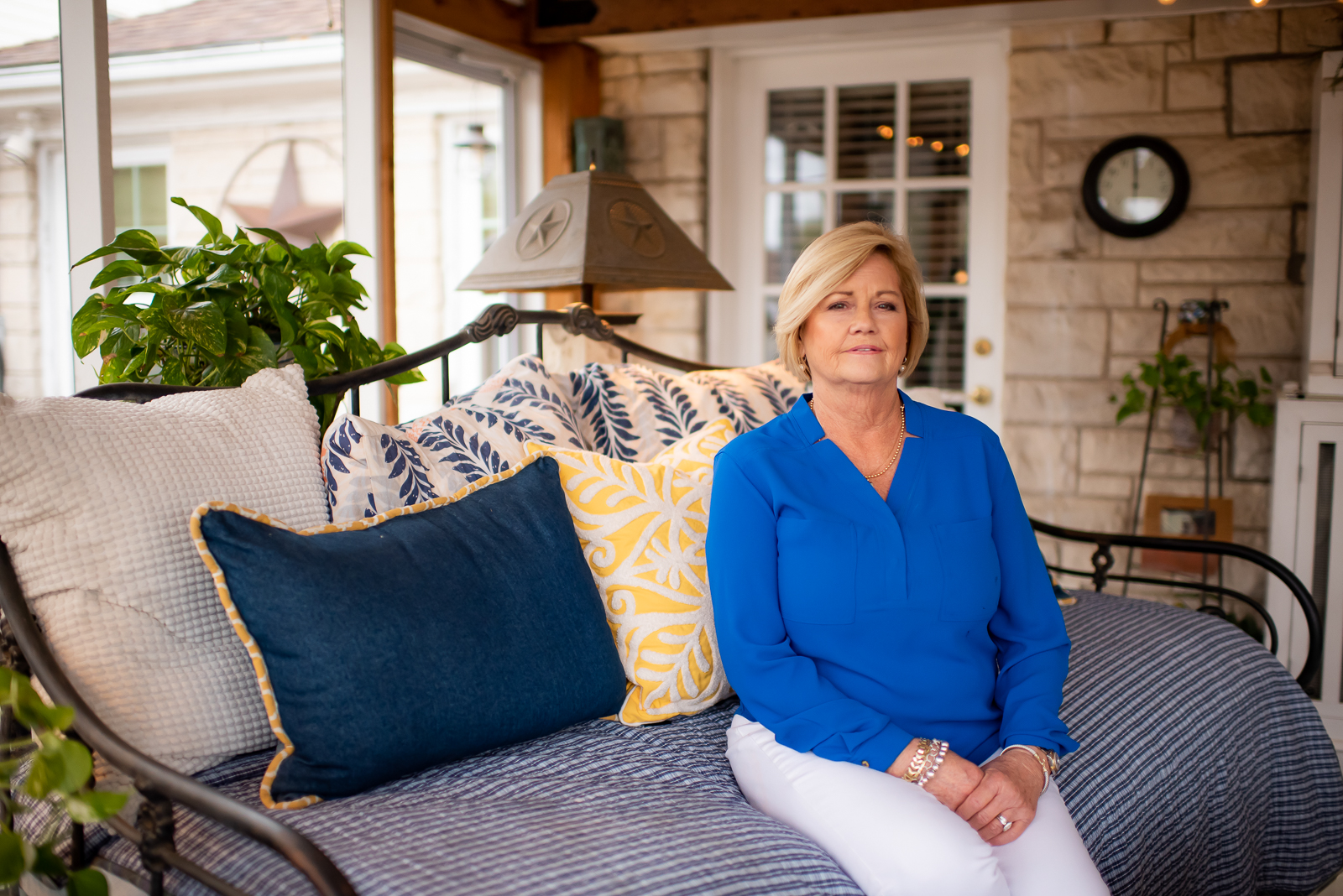Photography by Emil Lippe.
You’re a lifesaver. Literally. Or, at least, you have the potential to be.
Did you know that one organ donor equals eight organs, as well as tissues and corneas for as many as 75 people?
Neighbor Kelli Yonker is living proof of the impact of this selfless act, and she hopes her story will inspire you to sign up to be a hero.
If the name sounds familiar, you may know Yonker from her 19 years as a neighborhood teacher and librarian. She was teaching at Mockingbird Elementary in 1999 when, at the age of 40, routine blood tests showed her liver enzymes were elevated. The diagnosis: primary biliary cholangitis, a chronic autoimmune disease in which the bile ducts of the liver are slowly destroyed.
“I was very nervous about what this would mean for my future,” Yonker says. “I was told that there was a possibility I would at some point need a liver transplant, but medication would be used to try and prevent that from happening.”
Indeed, medication held the disease at bay for about a decade. But over time, the medication lost effectiveness, and Yonker developed symptoms.
“My liver was not functioning well, and my body was not releasing toxins normally. I was having issues with water retention and swelling,” she says, eventually necessitating frequent trips to have fluid removed.
In addition, she began to suffer frustrating cognitive symptoms due to the build-up of ammonia in her system.
“I was having bouts of amnesia,” she says. “And there were times when I wouldn’t wake up, and my husband would have to take me to the ER to have the ammonia removed.”
Around this time, her doctors made the call: It was time for a transplant.
“My doctors told me I couldn’t drive anymore or return to work until I received a new liver,” she says.
Working with UT Southwestern Transplant Clinic, Yonker was counseled extensively about the process, including a warning that it could be months or even years before a suitable match could be found. She was also informed how common it is for transplants to involve multiple attempts before they are successful.
“I understood that and always had faith in the process. But it was still a very hard and emotional time waiting for ‘the call.’ I was becoming sicker and sicker,” she says. “One of my doctors saw me a few days before my transplant and didn’t even recognize me as I was failing faster than expected.”
Fortunately, she received “the call” two days later.
“My doctors said that if a liver had not become available soon, I wouldn’t be here today to share my story,” she says.
Sadly, the waiting game is deadly for many. On average, 20 people die each day while waiting on “the call.” More than 112,000 people nationwide are on the waiting list for transplants.
“The importance and impact of donation is incredible. Currently, there are 10,000 Texans waiting for a lifesaving transplant — these are our neighbors, coworkers and community members,” says Karla Martinez with Southwest Transplant Alliance in Dallas. “By saying ‘yes’ to donation, you’re not just checking a box; you’re offering hope to those on the waitlist and gifting a beautiful legacy.”
Yonker says she remembers the first call that she received saying that a liver was available. She and her husband, Bob, were in Houston visiting her folks at the time, and they rushed back to Dallas.
But the first opportunity, as she had been cautioned, was not to be. A liver from a teenage boy was donated, with the plan to transplant part of it to a 2-year-old child and the other part to her — livers can regenerate, so it was a good plan.
Yonker was ready in pre-op when the surgeon came in to inform her that the remaining liver was likely too small for her and would be rejected if transplanted.
“We were disappointed, but I was thankful he was cautious, and a little boy’s life was saved that day,” Yonker says. “It obviously wasn’t my turn.”
The second call came two months later, but it was a disappointment, too. While waiting in the hospital to be prepped, the surgeon once again gave her the bad news: The donated liver was not viable.
“Six weeks later, we received the call that would change my life,” Yonker says.
A 24-year-old woman from a Dallas suburb had died, and her family decided to donate her organs.
“At the same time I was receiving her liver, a young man was receiving her heart,” Yonker says.
This time, the nine-hour surgery went off without a hitch, and 12 days later Yonker went home from the hospital. Five weeks later, she was released to return to work. She has enjoyed excellent health ever since.
Her story touched many lives.
“I remember people telling me that they became donors because of the first-hand experience they had seeing me go through the process,” she says.
Yonker was filled with gratitude for her new life and health, but she was advised to wait a while before attempting contact with the donor’s family. Nine months after the transplant, she wrote a letter to them.
“You have given me my life back,” she wrote. “My husband, family and friends thank you, and the 600 children who touch my life every day thank you, too. Since the transplant, I have been able to return to my love of teaching and being a librarian.”
Mindful of the family’s loss, Yonker says she acknowledged their pain.
“Our hearts are with you as you grieve the loss of your loved one,” Yonker wrote. “Please know that I owe my life to you for having the bravery and strength to allow this gift to happen in the midst of your grief.”






